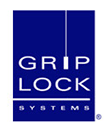Industry News
Digital-Addressable Lighting Is The Focus Of NLB Lighting Colloquy Expert Panel
May 19, 2016
Digital-addressable lighting is the topic of the fourth and final panel discussion of the National Lighting Bureau’s most recent annual lighting colloquy. Moderated by EdisonReport Publisher Randy Reid, the panel comprised Marty L. Riesberg, director of curriculum development at the Electrical Training Alliance, and James M. Yorgey, P.E., LC, CTS, technical-applications manager for Lutron Electronics Company, Inc.
Known principally by the acronym DALI—for digital-addressable lighting interface—digital-addressable lighting stems from an evolving international standard for the control of electronic ballasts, transformers, emergency lights and exit signs, and LED light sources. Mr. Yorgey described DALI as lighting whose various elements can be addressed individually. He said, “The conversation can be not just telling [a fixture] what to do; what light levels to go to or whether it can be on or off. I can ask [the fixture] questions…. ‘How much power are you using?’ ‘What’s the status of the lamp?’ ‘Is the lamp good?’ ‘Is the LED light engine OK?’ ‘Is the ballast or driver OK?’ So it gives me a lot of control capability I didn’t have before.”
Like other advanced building systems, DALI must be commissioned to ensure it works properly. Mr. Riesberg said that many electrical contractors are now capable of performing that service, providing they have properly trained personnel; i.e., individuals who understand digital-addressable lighting at the generic level and at the level of the specific manufacturer involved. He noted that an initial commissioning will not likely be the only commissioning will require. Recommissioning will be needed after a system has been modified.
Mr. Yorgey said that facility managers need to know more about DALI, in part so they realize that, when a new ballast or driver is needed, a simple replacement will not work; reprogramming will be required and various UL requirements will also have to be met. Mr. Riesberg suggested that owners would also benefit from more DALI education, so they realize that, while initial DALI-system costs may be higher, long-term costs could be far lower, an important consideration in both new construction and the retrofit of existing buildings. Picking up on that theme, Mr. Yorgey commented that “80 percent of the buildings that are going to be standing in 2030 are standing today, so renovating buildings is an important aspect of what we’re going to be doing with lighting.” The most cost-effective way to upgrade to DALI is when other modifications are ongoing, Mr. Yorgey said, adding that he can foresee wireless DALI systems that are far easier to install and modify.
The complete discussion is now available for viewing at no charge on the National Lighting Bureau website.
The Bureau’s annual lighting colloquy and the development of colloquy videos were made possible by the generous support of the Bureau’s sponsors. They include professional societies, trade associations, manufacturers, a labor union, and agencies of the U.S. government.









































